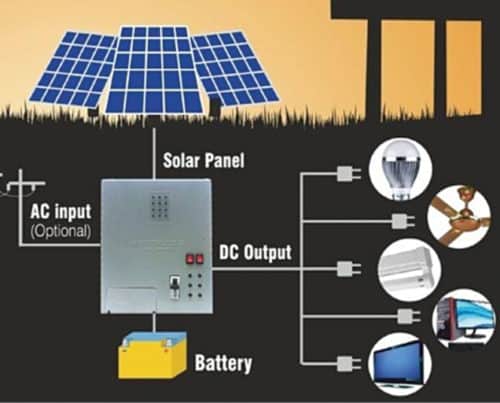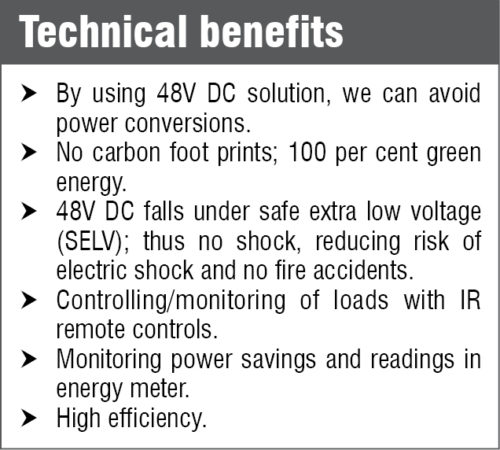Even after completing nearly two decades in the 21st century, a large population in developing and underdeveloped countries does not have access to constant power supply. Power lines are too costly for most of these places, while others have long power cuts. Although solar rooftops have grown to be the preferred option for providing decentralised power, high AC-DC conversion losses are common in photovoltaic systems besides their high cost.
Hyderabad-based startup Cygni Energy provides innovative DC-based solar solutions preventing the usual need for multiple AC-DC conversions for both off-grid and grid-connected systems. Need for smaller panels and batteries leads to smaller panels and reduced battery costs. DC technology can be integrated with AC power supply, and this ensures uninterrupted supply even during load-shedding. For this, a DC line can be easily deployed inside a building with little change to the power supply system.
The company offers a broad range of variants. Their innovative integrated battery inverter-less system, Inverterless S, switches to the battery on its own in case of power outage. It is 500VA solar AC equivalent with a load capacity of 500W and five hours backup. Venkat Rajaraman, chief executive officer, Cygni Energy, says, “Solar-DC inverterless controller (named IBIS) promises forty to fifty per cent higher energy efficiency by incorporating inverterless technology at Solar 48V DC, a technology developed in collaboration with IITM. IBIS saves fifty per cent electricity bill through intelligent use of solar, battery and energy-efficient DC equipment and appliances.”
Cygni mobile app allows customers to check their usage on-the-go. With Bluetooth/GPRS connectivity, they can track or monitor their energy consumption remotely through the dashboard.
Another solution, Dash solar controller for commercial applications, provides an energy-efficient power management and distribution system. Its smart control unit ensures maximum utilisation of solar power and supplements it with power from the grid, besides providing a battery backup.

For catering to both high- and low-power applications, Rajaraman says, “Typically, homes have two distinct lines: 5A and 15A. Our vision is to convert 5A line into a DC line and keep high-power appliances like dishwashers, air-conditioners and the like, which are typically on 15A line, intact.”
Besides these, other products include AC-DC converters and compatible 48V DC appliances. The converters come in three variants, for 2.4kW, 500W and 150W power output. With 48V DC appliances like BLDC fans, LED lights and bulbs, and LED TVs, existing AC wiring can be used.
About pricing, Rajaraman says, “Price of our products ranges from ₹ 20,000 to ₹ 100,000, and changes based on the bundle of appliances that we provide to customers.”
Discussing the challenges, Rajaraman, says, “Our customers are majorly in hard-to-reach rural areas. To handle the challenge of post-installation service, we have a dedicated onsite and online support team for quick serving, and all products come with built-in GSM/GPRS, which enables remote monitoring even in such rural areas.”

The company was the first startup to benefit from the government’s Startup India Action Plan when it was launched. Talking about the future, Rajaraman says, “The rural productive appliances segment is moving towards DC in a big way. Our major focus is on finding more domestic and productive appliances that run effectively on our system.”







I have tried this type of DC Micro Grid at least 30 years back around 1990 , to provide power to light and fans in stand alone systems and in some cases to charge portable Solar Lanterns and Battery Bank. The System worked well with properly Designed DC load and CCU ( Charge Controller Unit ).
In case of unavailability of DC load with exact DC Bus voltage of System , Highly efficient DC to DC converter could be used .
what about AC ,refrigerator and water pump?
I thing 3000VA solar inverter can do all this job . BLDC technology help to reduce power conception.